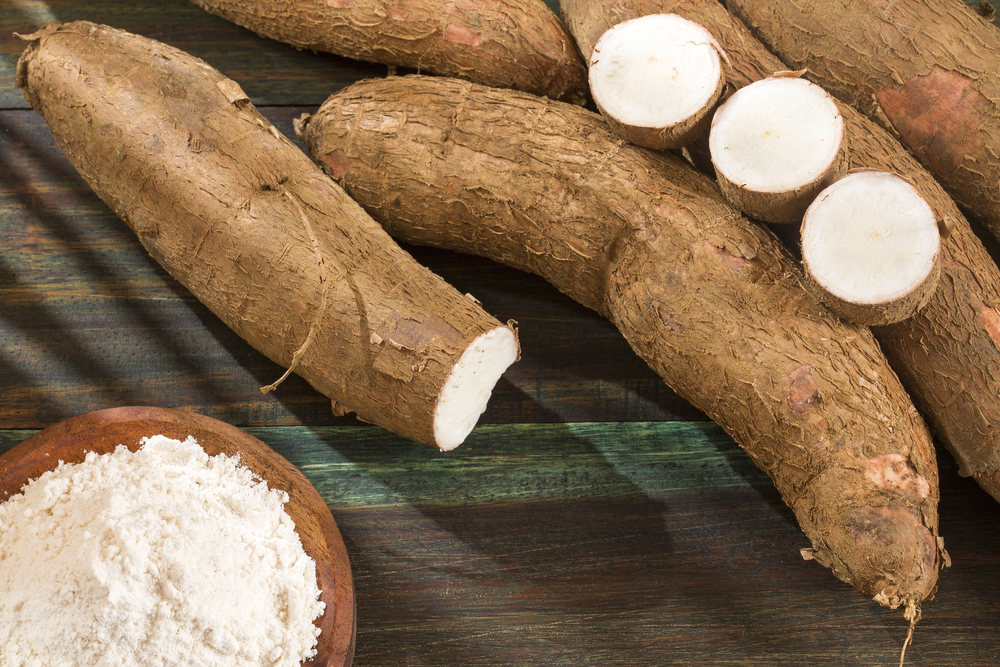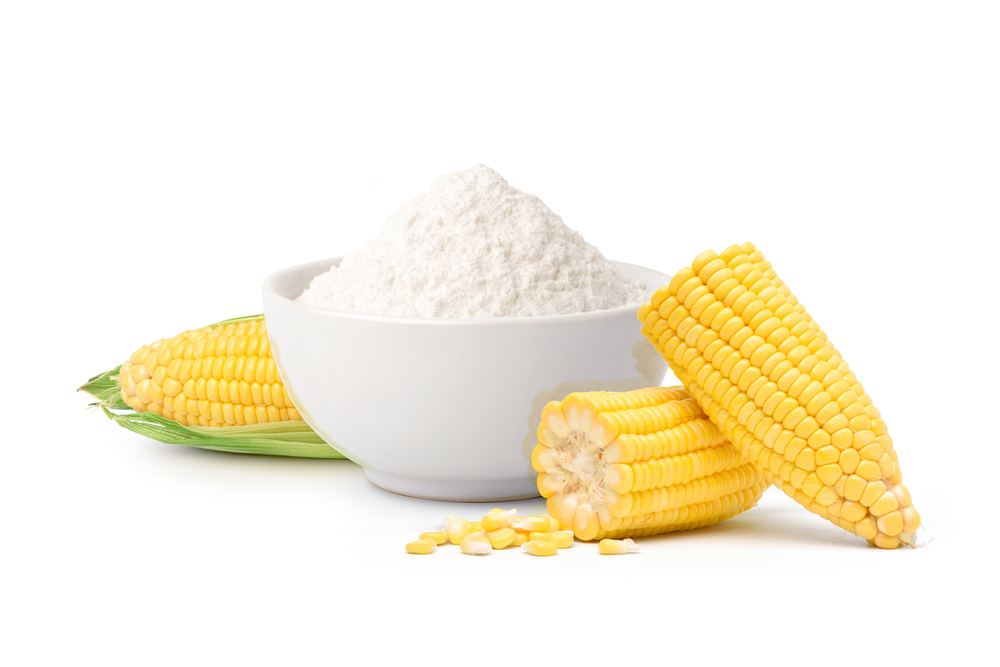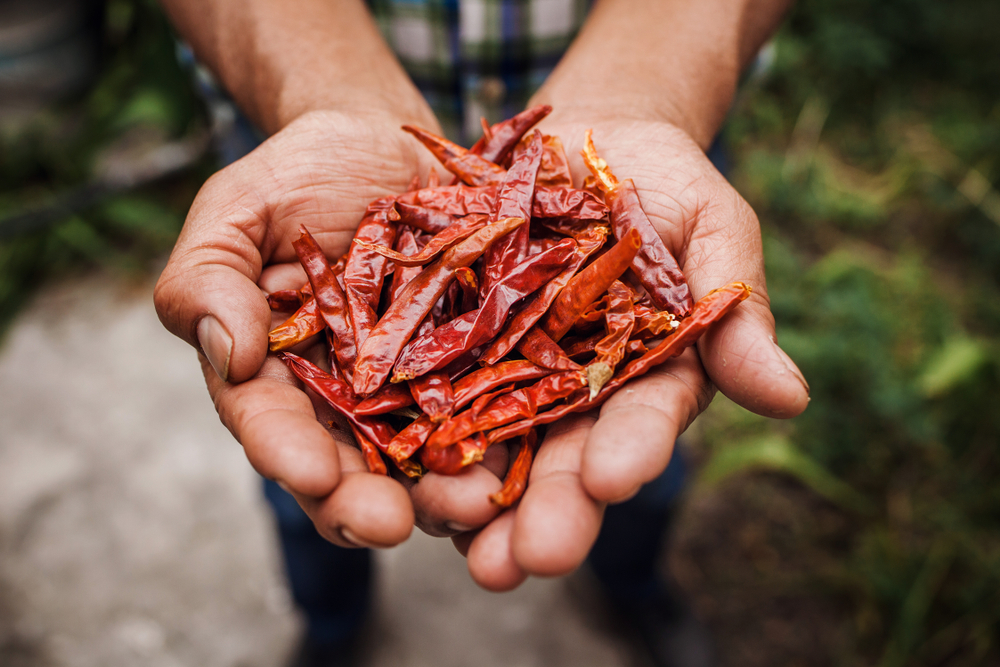As a home cook or a professional chef, you might have come across recipes that call for either cornmeal or cornstarch.
While both ingredients come from corn, they have distinct differences in texture, flavor, and culinary uses. Understanding the differences between cornmeal and cornstarch is crucial in choosing the right ingredient for your recipe.
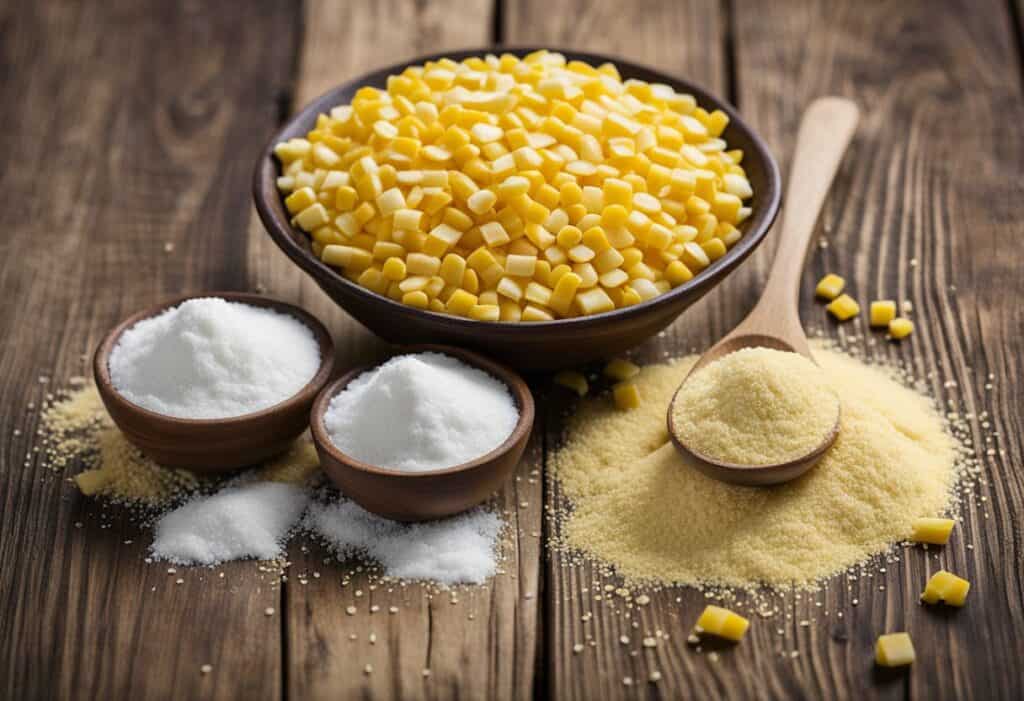
Cornmeal is made by grinding whole kernels of corn into a coarser texture, while cornstarch is made by grinding only the endosperm of the corn kernel into a fine, white powder.
These differences in processing result in different culinary uses for the two ingredients.
Cornmeal is commonly used in savory dishes like cornbread, polenta, and fried chicken coating, while cornstarch is often used as a thickener in sauces, gravies, and desserts.
Key Takeaways
- Cornmeal and cornstarch are two distinct ingredients with differences in texture, flavor, and culinary uses.
- Cornmeal is coarser and commonly used in savory dishes, while cornstarch is finer and often used as a thickener in sauces, gravies, and desserts.
- Understanding the differences between cornmeal and cornstarch is crucial in choosing the right ingredient for your recipe.
Understanding Cornmeal and Cornstarch
As someone who loves to cook, I often find myself confused about the differences between cornmeal and cornstarch. Both are made from corn, but they have different culinary uses.
Cornmeal is a coarsely ground flour made from dried whole corn parts. It has a gritty texture and is often used in recipes for cornbread, muffins, and pancakes.
Cornmeal can be fine, medium, or coarse, depending on how finely it is ground. Stone-ground cornmeal is made by grinding whole-grain corn, while degerminated cornmeal has had the germ and bran removed.
Cornstarch, on the other hand, is a fine powder made from the endosperm of corn. It is often used as a thickener in sauces, gravies, and soups.
When mixed with water, cornstarch creates a smooth, thick paste that helps bind ingredients together. Cornstarch is also used in baking to lighten the texture of cakes and cookies.
One of the key differences between cornmeal and cornstarch is their protein content. Cornmeal contains more protein than cornstarch, which is almost pure starch.
Cornmeal also contains more carbohydrates, fiber, and fat than cornstarch.
Another important difference is that cornmeal is gluten-free, while cornstarch is not. This makes cornmeal a good choice for people with celiac disease or gluten intolerance.
Cornstarch is also a good source of minerals and vitamins, including iron, calcium, and vitamin B6.
When buying cornmeal or cornstarch, it’s important to pay attention to the label. Some products are labeled as corn flour or cornflour, which can be confusing.
In the United States, corn flour usually refers to a very finely ground cornmeal, while in the United Kingdom, cornflour is another name for cornstarch.
Overall, understanding the differences between cornmeal and cornstarch can help you choose the right ingredient for your recipe.
Whether you’re making a batch of cornbread or thickening a sauce, knowing the properties of these two corn-based products can help you achieve the best results.
Culinary Uses and Differences
When it comes to cooking, cornmeal and cornstarch are two ingredients that are often used interchangeably.
However, they have distinct differences that make them better suited for different culinary applications.
Cornmeal is made by grinding whole corn kernels into a coarse meal. It has a gritty texture and is commonly used in dishes like cornbread, pancakes, and grits.
It can also be used as a coating for fried foods or as a breading for baked goods.
On the other hand, cornstarch is made by extracting the starchy endosperm from the corn kernel and grinding it into a fine powder.
It is commonly used as a thickening agent in soups, sauces, gravies, and pie fillings. It can also be used as a slurry to thicken dishes or as a coating for fried foods to make them crispy.
When it comes to substitutes, cornmeal and cornstarch cannot be used interchangeably. However, there are some alternatives that can be used in their place.
For example, if you don’t have cornmeal, you can use polenta or grits instead. And if you don’t have cornstarch, you can use flour or arrowroot powder as a thickener.
Overall, cornmeal and cornstarch have distinct culinary uses and cannot be used interchangeably. It’s important to understand their differences and use them appropriately in recipes to achieve the desired result.
Texture and Flavor Characteristics
When it comes to texture, cornstarch and cornmeal are quite different. Cornstarch is a fine powder that is very smooth and silky to the touch.
It is often used as a thickener in sauces and gravies because it has a very low protein content and does not add any flavor or texture to the dish.
On the other hand, cornmeal has a much coarser texture and a gritty feel. It is often used in baking to add texture and flavor to breads, muffins, and other baked goods.
In terms of flavor, cornstarch is virtually tasteless and odorless. It does not add any flavor to the dishes it is used in, but it does help to thicken and stabilize them.
Cornmeal, on the other hand, has a distinct corn flavor and aroma that can vary depending on the type of corn used and how it is processed.
Some types of cornmeal contain more bran and germ than others, which can affect the flavor and texture of the finished product.
When it comes to moisture, cornstarch and cornmeal behave very differently. Cornstarch is a very dry powder that absorbs moisture quickly and easily.
This makes it ideal for thickening sauces and gravies, but it can also make it difficult to work with in some recipes.
Cornmeal, on the other hand, has a much higher moisture content and can be used to add moisture and texture to baked goods.
Overall, the texture and flavor characteristics of cornstarch and cornmeal are quite different. While cornstarch is smooth and virtually tasteless, cornmeal is gritty and has a distinct corn flavor.
Understanding these differences can help you choose the right ingredient for your recipe and achieve the desired texture and flavor in your finished dish.
Cornmeal and Cornstarch in Baking
As a baking ingredient, cornmeal and cornstarch have different properties that make them suitable for different purposes.
Cornmeal is coarsely ground from dried whole corn parts, while cornstarch is finely ground from the endosperm of corn.
Cornmeal is often used in baking to add a crunchy texture or a distinct corn flavor to baked goods. It can be used alone or in combination with other flours such as all-purpose flour, wheat flour, semolina, or ground oats.
Cornmeal is also commonly used in recipes for cornbread, muffins, and pancakes.
On the other hand, cornstarch is primarily used as a thickening agent in baking. It is often used in combination with other flours such as all-purpose flour, tapioca starch, rice flour, or baking powder to create a lighter texture in baked goods.
Cornstarch is also used in recipes for custards, puddings, and cream pies to create a smooth and creamy texture.
When substituting cornmeal for cornstarch, it is important to keep in mind that cornmeal is not a good thickener. Instead, it is best used as a substitute for part of the flour in a recipe to add texture and flavor.
Similarly, when substituting cornstarch for cornmeal, it is important to keep in mind that cornstarch will not add the same texture or flavor as cornmeal.
Overall, cornmeal and cornstarch are both useful ingredients in baking, but they serve different purposes. Understanding the properties of each ingredient will help you choose the right ingredient for your recipe.
Buying Guide
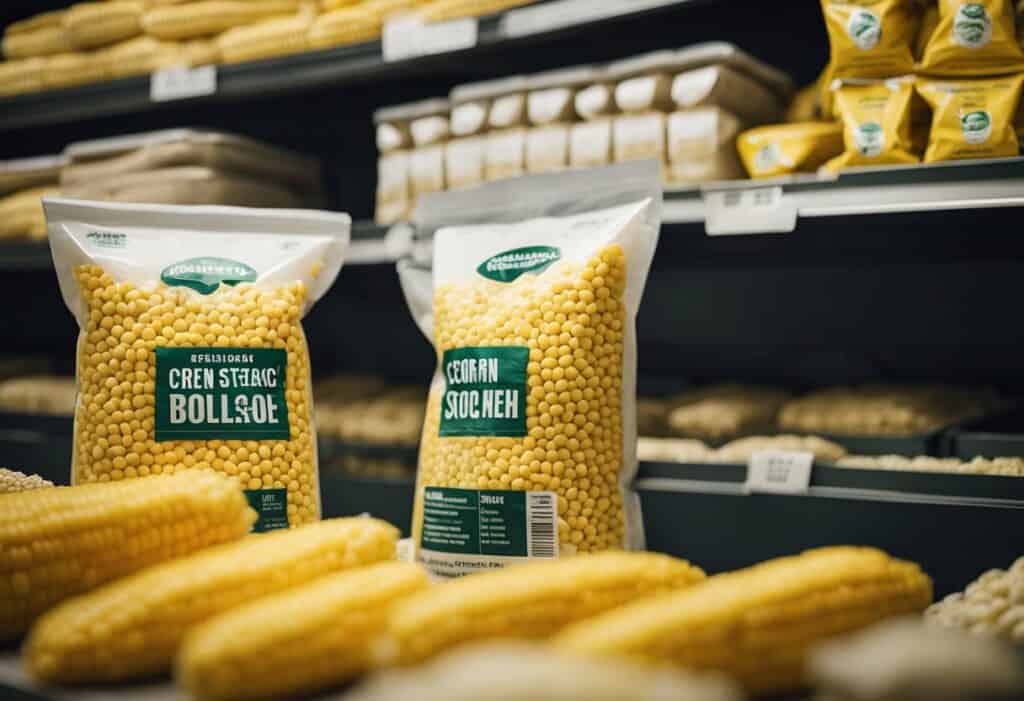
When choosing between corn starch and corn meal, there are a few key factors to consider to ensure that you are getting the best product for your needs.
Firstly, consider the intended use of the product. Corn starch is a fine white powder that is often used as a thickening agent in soups, sauces, and gravies.
It is also commonly used in baking to add structure and texture to baked goods. On the other hand, corn meal is a coarser texture and is often used in recipes for cornbread, corn muffins, and other baked goods.
Another factor to consider is the availability of the product.
Corn starch and corn meal can typically be found at most grocery stores, but if you are looking for a specific type or brand, you may need to visit a specialty store or order online.
If you are looking for a gluten-free alternative to corn starch, there are other options such as potato starch, arrowroot, and tapioca starch.
These products can be found at most health food stores and some grocery stores.
When choosing between different brands of corn starch or corn meal, it is important to read the label carefully to ensure that you are getting a high-quality product.
Look for products that are made from non-GMO corn and are free from additives and preservatives.
In summary, when choosing between corn starch and corn meal, consider the intended use of the product, availability, and quality.
Don’t forget to read the label carefully to ensure that you are getting the best product for your needs.
Regional Variations and Preferences
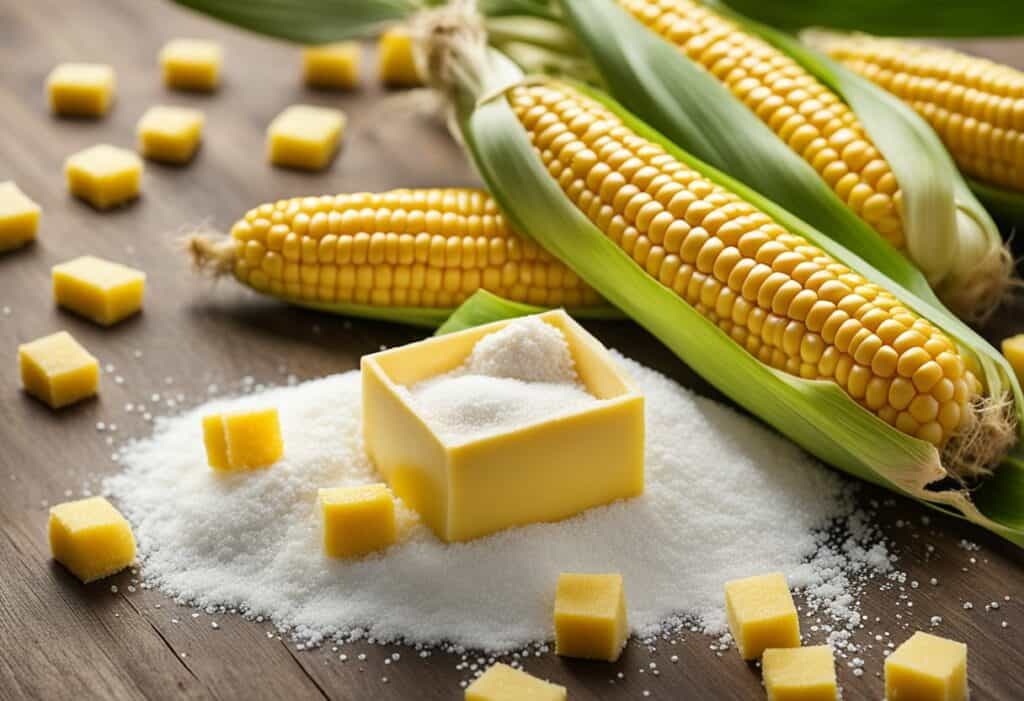
When it comes to corn starch and corn meal, there are some regional variations and preferences that should be noted.
For example, southerners in the United States tend to prefer cornmeal over cornstarch for their cooking and baking needs.
Cornbread, a staple in southern cuisine, is typically made with cornmeal rather than cornstarch.
In addition, barbecue enthusiasts also tend to favor cornmeal over cornstarch. Cornmeal is often used as a coating for meats before they are grilled or smoked, while cornstarch is rarely used in this way.
Interestingly, in the U.K., cornflour and cornstarch are often used interchangeably. However, in the U.S., cornflour typically refers to finely ground cornmeal rather than cornstarch.
When it comes to culinary purposes, cornstarch is often used as a thickening agent in sauces, soups, and gravies.
On the other hand, cornmeal is typically used in baking, such as for making cornbread or as a coating for fried foods.
Overall, while there are some regional variations and preferences when it comes to cornstarch and cornmeal, both ingredients have their own unique uses and benefits in cooking and baking.
Nutritional Profile

When it comes to comparing corn starch and corn meal, it’s important to consider their nutritional profiles. While both are made from corn, they have different nutrient compositions.
Corn starch is primarily a source of carbohydrates, with very little fat, protein, or fiber. A 100-gram serving of corn starch contains approximately 381 calories, 91 grams of carbohydrates, and less than 1 gram each of fat, protein, and fiber [1].
It is also low in vitamins and minerals, with the exception of iron, which it contains in small amounts.
On the other hand, corn meal is a good source of several important nutrients. A 100-gram serving of corn meal contains approximately 362 calories, 76 grams of carbohydrates, 9 grams of protein, and 4 grams of fiber [2].
It is also a good source of magnesium, with 100 grams of corn meal providing approximately 127 milligrams of magnesium, or about 30% of the recommended daily intake for adults [2].
Magnesium is an important mineral that plays a role in many bodily functions, including muscle and nerve function, blood sugar control, and blood pressure regulation.
Corn meal is also a good source of folate, a B-vitamin that is important for healthy fetal development during pregnancy.
A 100-gram serving of corn meal provides approximately 56 micrograms of folate, or about 14% of the recommended daily intake for adults [2].
In terms of energy, both corn starch and corn meal are calorie-dense foods.
However, because corn meal contains more protein and fiber than corn starch, it may be more filling and satisfying, which could help with weight management.
Overall, while corn starch and corn meal are both made from corn, they have different nutritional profiles.
Corn starch is primarily a source of carbohydrates, while corn meal is a good source of several important nutrients, including magnesium and folate.
Common Misconceptions and Clarifications
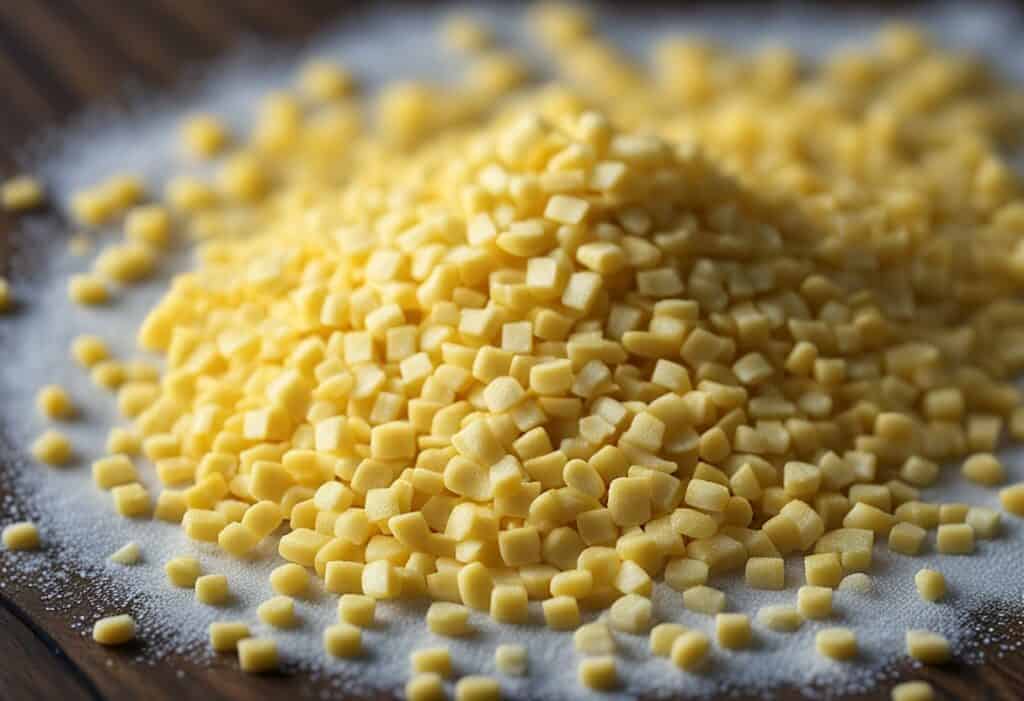
When it comes to cornstarch and cornmeal, there are a few common misconceptions that can lead to confusion. Here are some clarifications to help you differentiate between the two:
Interchangeably
One common misconception is that cornstarch and cornmeal can be used interchangeably. However, this is not true.
Cornstarch is primarily used as a thickening agent, while cornmeal is used for baking and frying.
Cornmeal has a coarser texture and a stronger flavor than cornstarch, which can affect the outcome of your recipe if you use them interchangeably.
Confusing
Another misconception is that cornstarch and cornmeal are the same thing. While they are both made from corn, they are processed differently and have different properties.
Cornstarch is made from the endosperm of the corn kernel, while cornmeal is made from the whole kernel.
Cornstarch is a fine, white powder, while cornmeal has a coarser texture and a yellow color. Understanding these differences will help you choose the right ingredient for your recipe.
Flour-like
Some people may also assume that cornstarch and cornmeal are similar to flour.
While they share some similarities, such as being used in baking and frying, there are important differences to note.
Cornmeal has a distinct flavor and texture that can add depth to your recipes, while cornstarch is flavorless and primarily used as a thickener. Cornmeal is also a good source of fiber, while cornstarch is not.
Crust
Finally, some may think that cornmeal is only used for making crusts, such as in cornbread or pizza dough.
While cornmeal is commonly used for this purpose, it can also be used in a variety of other recipes, such as breading for fried foods or as a coating for fish or chicken.
Cornstarch can also be used in a variety of recipes, such as in sauces and gravies, but is not typically used for making crusts.
Overall, understanding the differences between cornstarch and cornmeal can help you choose the right ingredient for your recipe and avoid any confusion or mistakes.
Related posts:
Frequently Asked Questions
What is the difference between cornstarch and cornmeal?
Cornmeal is made by grinding whole corn kernels into a coarse powder, while cornstarch is made by extracting the endosperm from the corn kernel and grinding it into a fine powder.
Cornmeal has a gritty texture and is often used in recipes for bread, muffins, and pancakes, while cornstarch is a smooth powder that is commonly used as a thickening agent in sauces, gravies, and soups.
Can cornstarch be used as a substitute for cornmeal?
No, cornstarch cannot be used as a substitute for cornmeal. Cornstarch has a different texture and flavor compared to cornmeal, and it does not have the same nutritional value.
However, you can use corn flour as a substitute for cornmeal in some recipes.
What are some recipes that use corn flour?
Corn flour is commonly used in recipes for tortillas, tamales, and cornbread. It is also used as a thickener in soups, stews, and gravies.
How does cornmeal differ from polenta?
Cornmeal and polenta are both made from ground corn, but they have different textures and are used in different ways.
Cornmeal is a coarse powder that is often used in recipes for bread, muffins, and pancakes. Polenta is a finer grind of cornmeal that is cooked with water or broth to make a porridge-like dish that can be served as a side dish or used as a base for other dishes.
Is cornstarch the same as corn flour in the UK?
No, cornstarch is not the same as corn flour in the UK. Corn flour in the UK is a fine, white powder that is made from corn and is used as a thickener in sauces and gravies.
Cornstarch is also a fine, white powder that is made from corn, but it is used more commonly as a thickener in the US.
What is the purpose of using cornstarch in fried chicken?
Cornstarch is often used in recipes for fried chicken to create a crispy coating on the outside of the chicken.
When mixed with flour, cornstarch helps to create a lighter, crispier texture than flour alone. It also helps the coating to adhere better to the chicken and prevents it from falling off during cooking.


